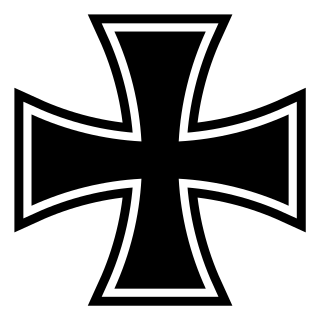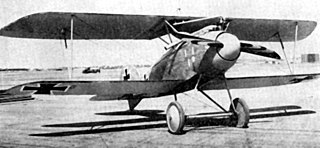| Adolf Gutknecht | |
|---|---|
| Born | 12 September 1891 Badingen |
| Allegiance | Germany |
| Service/ | Aviation |
| Rank | Oberleutnant |
| Unit | Jasta 43 |
| Commands held | Jasta 43 |
| Awards | Iron Cross |
Oberleutnant Adolf Gutknecht (born 12 September 1891, date of death unknown) was a World War I flying ace credited with eight aerial victories. [1]

A flying ace, fighter ace or air ace is a military aviator credited with shooting down several enemy aircraft during aerial combat. The actual number of aerial victories required to officially qualify as an ace has varied, but is usually considered to be five or more.
Adolf Gutknecht was born in Badingen, Germany on 12 September 1891. In the years before World War I, he joined the army as a cadet. In the beginning of the war, he campaigned in France, Bulgaria, and Macedonia. He transferred to aviation as an aerial observer, and scored a victory in June 1916. He subsequently became a pilot, having won both classes of the Iron Cross. [2]

Badingen is a village and a former municipality in the district of Stendal, in Saxony-Anhalt, Germany. Since 1 January 2010, it is part of the town Bismark. It has a "CET Central European" timezone, and does not participate in Daylight Saving Time.

The Iron Cross is a former military decoration in the Kingdom of Prussia, and later in the German Empire (1871–1918) and Nazi Germany (1933–1945). It was established by King Frederick William III of Prussia in March 1813 backdated to the birthday of his late wife Queen Louise on 10 March 1813 during the Napoleonic Wars. Louise was the first person to receive this decoration (posthumously). The recommissioned Iron Cross was also awarded during the Franco-Prussian War, World War I, and World War II . The Iron Cross was normally a military decoration only, though there were instances of it being awarded to civilians for performing military functions. Two examples of this were civilian test pilots Hanna Reitsch who was awarded the Iron Cross 2nd Class and 1st Class and Melitta Schenk Gräfin von Stauffenberg, who was awarded the Iron Cross 2nd Class, for their actions as pilots during World War II.
On 1 June 1918, he became Staffelführer of Jagdstaffel 43. The squadron was mounted on Albatros D.III and Albatros D.Va fighters. It would remain at Haubourdin Aerodrome until 22 August, [3] by which time Gutknecht would have run his victory string to five confirmed and one unconfirmed. He was also promoted to oberleutnant. [4]
Staffelführer was one of the first paramilitary ranks used by the German Schutzstaffel (SS) in the early years of that group's existence. The later SS rank of Staffelführer traces its origins to the First World War, where the title was used by commanding officers of the Deutsches Heer's Luftstreitkräfte aircraft squadrons initially named as Feldflieger Abteilung as observation-only units in 1914, and during 1916, became known as Staffeln.
Royal Prussian Jagdstaffel 43, commonly abbreviated to Jasta 43, was a "hunting group" of the Luftstreitkräfte, the air arm of the Imperial German Army during World War I. The unit would score over 35 aerial victories during the war, including two observation balloons downed. The squadron's victories came at the expense of six killed in action, five wounded in action, two injured in accidents, and one taken prisoner of war.

The Albatros D.III was a biplane fighter aircraft used by the Imperial German Army Air Service (Luftstreitkräfte) during World War I. A modified licence model was built by Oeffag for the Austro-Hungarian Air Service (Luftfahrtruppen). The D.III was flown by many top German aces, including Wilhelm Frankl, Erich Löwenhardt, Manfred von Richthofen, Karl Emil Schäfer, Ernst Udet, and Kurt Wolff, and Austro-Hungarian ones, like Godwin von Brumowski. It was the preeminent fighter during the period of German aerial dominance known as "Bloody April" 1917.
Gutknecht won three more victories while remaining in command of Jasta 43 until 2 November 1918. He was in hospital from 25 October onwards to war's end, however. [5]


